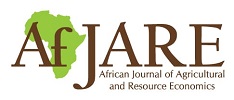Risk factors in crop abandonment decisions: Evidence from Zambia
Nanii Yenibehit, Canicio Dzingirai & Nixon S. Chekenya
Abstract
The literature on what drives crop failure and crop abandonment is scant. This paper explores the interplay between risk factors and crop abandonment. We examine the role of risk sources and risk management strategies in crop abandonment by smallholder maize farmers in Zambia. Specifically, we seek to improve the understanding of risk factors in crop abandonment decisions at the subnational level using the Hellwig synthetic risk measure and tobit regression. Based on data for the years 2009 to 2015, we find variability in the Hellwig Risk Index indicating different levels of crop abandonment risk across provinces, with the Laupula, Southern and Western provinces remaining in the high-risk category (Class III) throughout the period. Maize yield, area planted, area harvested, consumer price index (CPI), maize price and climate were the main drivers of crop abandonment risks among farmers across the country. The government should implement targeted interventions and support programmes to address the specific needs of high-risk provinces such as Laupula, Southern and Western. There is also a need for the government to promote efficient land use and provide support for optimal planting and harvesting practices in order to reduce overextension and abandonment risks.
